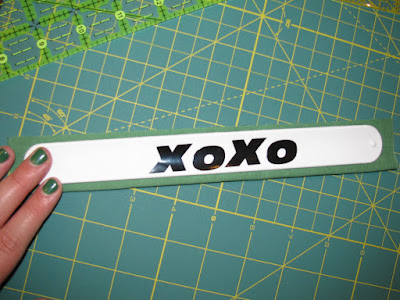My directions are a shortened version of what I found on the site above.
Materials
-cotton fabric for tomato body
-thread
-cotton batting
-fabric glue
-felt for tomato top
1. Cut a circle out of your fabric. Mine were about 7 inches in diameter.

2. With fabric wrong side up, sew a running stitch around the perimeter of the circle (having a knot at the end). Pull the string to gather the fabric.

3. Stuff with cotton batting (good for pincushion use). Stitch opening closed with left over thread after stuffed. Tie off thread on top.

4. Cut out tomato topping (template from the site above here), glue down the top onto tomato to cover stitched closing. Take remaining thread (with a knot), starting from the tomato top, in center, thread the needle down through the tomato, out the bottom and back up. Repeat a few times. *Pull thread tight during this step* Tie off on top of the tomato. Running thread through the core (and keeping tight) should give the tomato a flattened heirloom look.


How to make one into a pincushion wrist band:
extra supplies:
-slap bracelet (I searched every where and found one at Walgreens, not even a plain one)
-rubber glove
-cotton fabric to cover bracelet (mine is green)
1. Measure and cut out a 2 3/4" x 9 1/2" fabric piece for your bracelet. Make sure it fits (fold in half to size. It should have some extra space on all sides for seam allowance).


2. Once right sides are face to face, and fabric is folded in half, sew a 1/4" seam allowance down one long edge and the bottom short end (leaving one short end open).

3. Cut fabric edging close to seam.

4. Fold right side out.

5. Slide slap bracelet into cover.

6. Sew last side together and cut close to seam when finished.


Finished with bracelet cover!
To attach a tomato to bracelet:
*For this bracelet I made the running stitch farther apart from each other to allow for more batting. I stuffed it fuller and didn't flatten into an heirloom shape as much, allowing more space and room for the length of the needles.*
1. After threading down through the core of the tomato, thread through the top fabric of the bracelet and back up the tomato (may need to use a glove to grasp the needle to pull out if you stuffed it really full). I marked the center of mine so I would know where to thread. Don't pull thread tight until the very end!!
 2. Thread back down through the tomato and the top of the bracelet fabric in an X formation, remembering to keep the thread loose.
2. Thread back down through the tomato and the top of the bracelet fabric in an X formation, remembering to keep the thread loose. 3. Once you are finished threading through the tomato and the fabric of the bracelet (and your needle and thread are pulled out the top of the tomato), pull the thread tight. Tie off thread and done!
3. Once you are finished threading through the tomato and the fabric of the bracelet (and your needle and thread are pulled out the top of the tomato), pull the thread tight. Tie off thread and done!




















